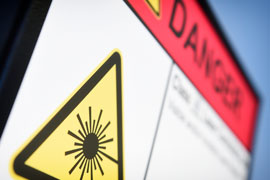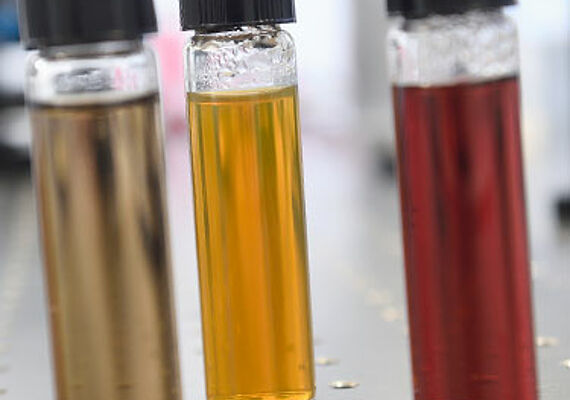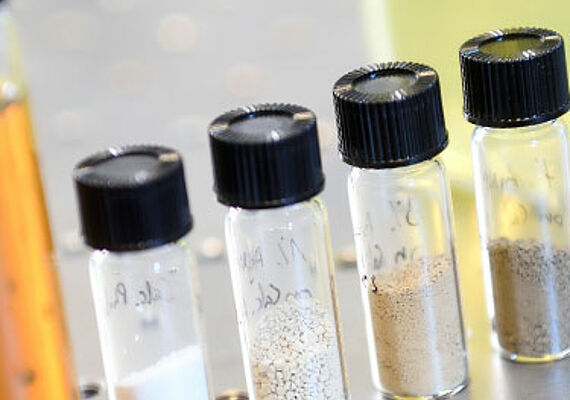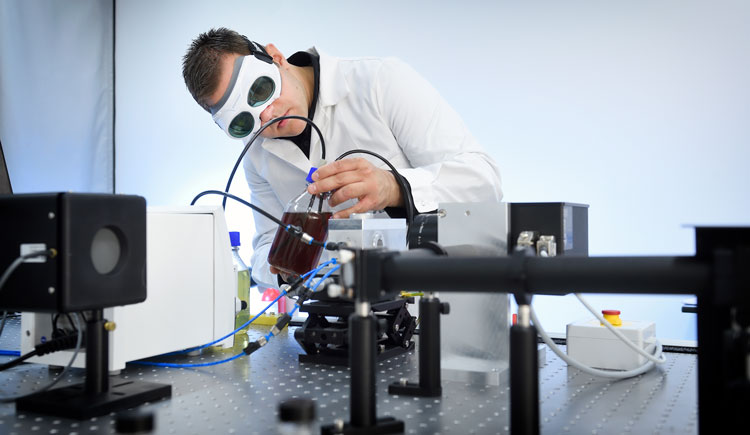// ULTRAPURE NANOPARTICLE BY LASER ABLATION
Laser ablation is a physical process for generating nanoparticles. It uses short laser pulses that are focused on a target material in a liquid environment. The target absorbs the energy of the laser pulse and is vaporized. The vaporized material then cools and condenses as nanoparticles. The result is highly charged particles, which are therefore very stable in solution.
Production
Laser ablation enables the formation of nanoparticle dispersions that are free of any impurities, such as unreacted source materials. It requires no capping agents or stabilizing ligands. The use of short laser pulses allows the nanoparticle synthesis process to be performed in a wide range of liquid carriers such as ddH2O, including volatile organic solvents such as pure acetone. It enables the conversion of almost any solid or powdery material into a colloid with almost endless material-liquid combinations. It is therefore a powerful technique for material screening and individual applications. The metallic nanoparticles formed have a positive charge on the surface, so that electrostatic stabilization by the surrounding medium is achieved in most cases without the need for a chemical stabilizer. Colloidal Au solutions of 30% show no signs of precipitation for months or even years.
Excellent characteristics
- Ultra-high purity, no particle-associated residual chemicals
- Higher biocompatibility, lower toxicity for medical/pharmaceutical applications
- Higher conductivity
- High stability through electrostatic stabilization
- Longer shelf life
- No need to resuspend nanoparticles before printing
- No clogged nozzles during printing
- Direct use of organic solvents
- Simple compounding for injection molding
- High solid particle content up to 30 % for gold up to 60 % for ceramic
- Easy optimization of the printing ink for your printing process, only one addition of ethylene glycol
- Easy shipping, easy editing
- Can be used as an additive
- Increase of the adsorption efficiency
- Higher sensitivity of the assays due to higher amount of biomolecules (e.g. antibodies)
Application areas
- UPNs for diagnostics
- Turbidimetric assays (Sol Particle Immunoassays (SPIA))
- Lateral Flow Assays
- Contrast medium for MRI
- Implants for activated local drug release
- Biological sensors (e.g. SERS & LSPR based assays)
- UPNs for therapy
- Inductive heating with alternating magnetic field for non-invasive cell treatment
- UPNs for life science research
- Conjugate development
- Electrodes on Petri dishes for cell culture experiments
- Immune staining for electron microscopy & darkfield microscopy
- Nano-ink for microelectronics (solar cells, OLED & LCD displays, satellites, RFID tags, batteries) with the properties of conductors, semiconductors and dielectrics
- Micro heaters, thin film transistors, capacitors, resistors, antennas, etc.
- Semiconductive coatings
- Insulators
- On various types of substrates, including flexible, textile
Compatible with inkjet and aerosol printers
// Research Services
- Consulting and Mentoring for medical product innovations and questions to Regulatory Affairs according to MDD/MDR and IVDR, as well as quality management according to ISO13485
- Development of regulatory Roadmaps for medical products/concepts
- Operative collaboration when developing RA- and QM-documents
- Usability, risk management, clinical assessment
- Supporting the implementation of QM-Systems
- Supporting the regulatory process






